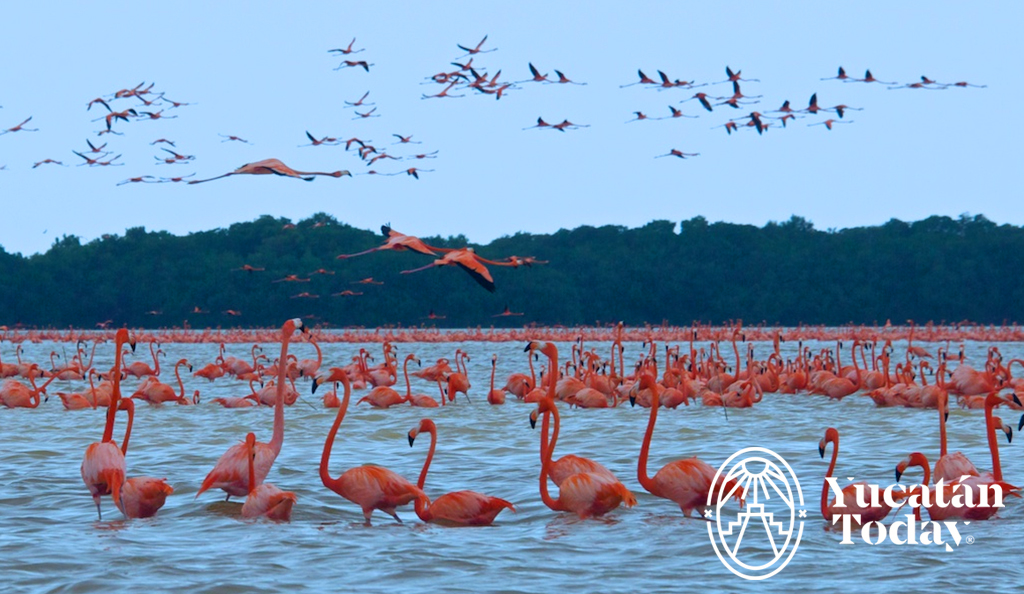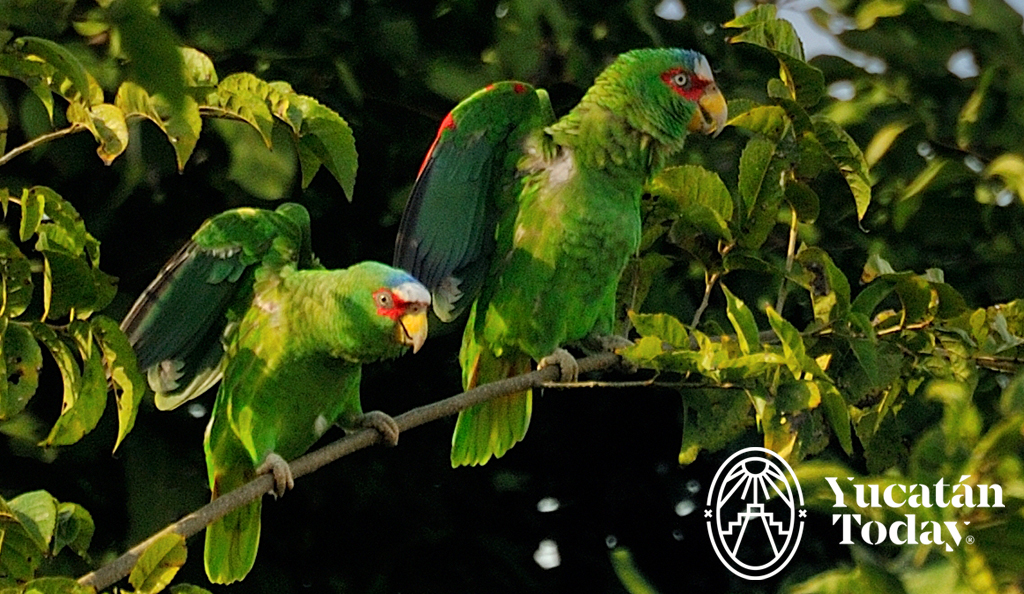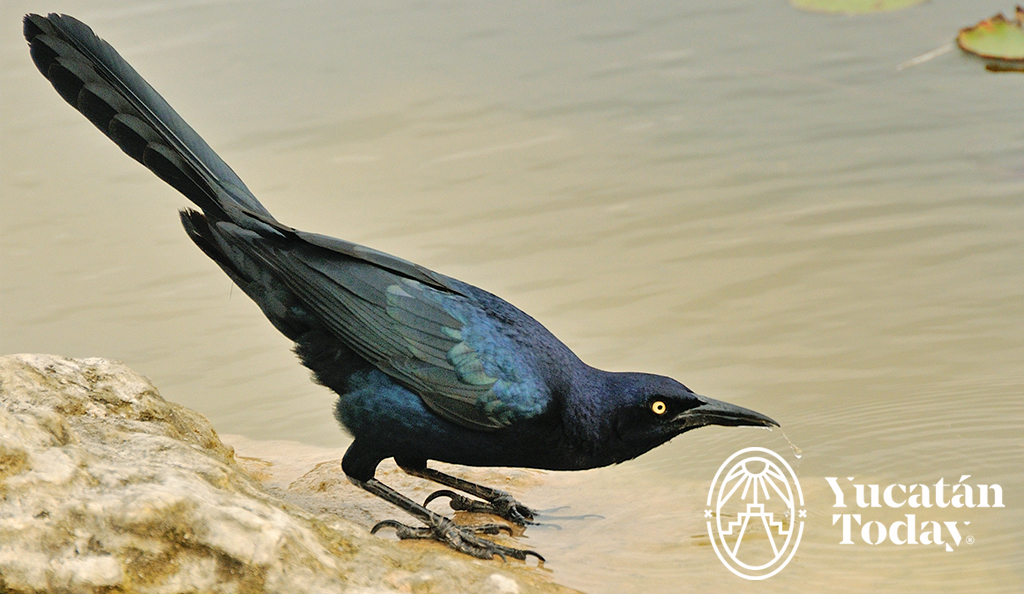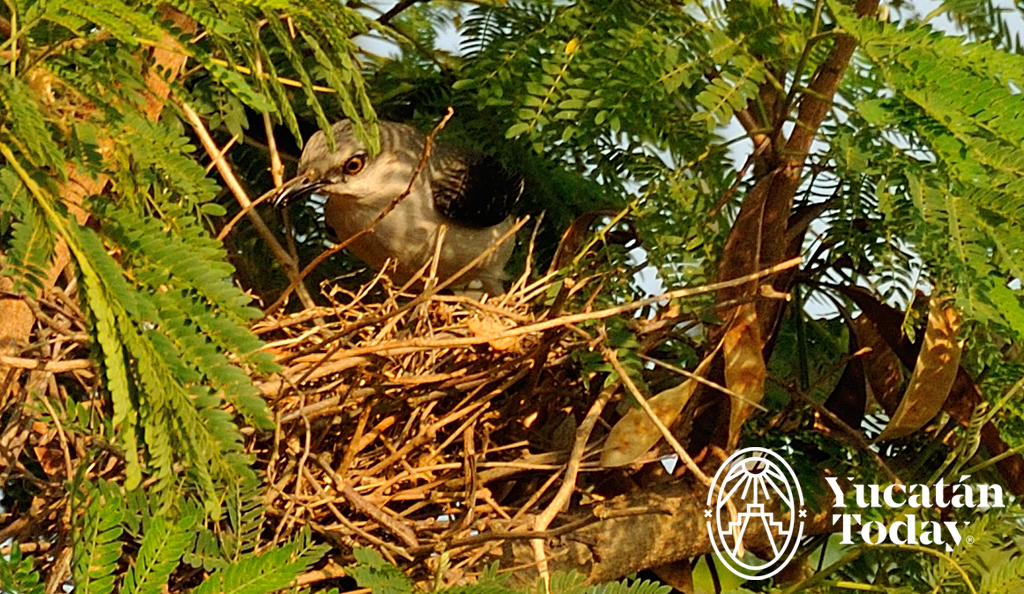
Cherie's Bird of the Month: American Flamingo
Journey to our Yucatán coastal lagoons and mangroves to see that the American Flamingo is neither a croquet mallet, as depicted in “ Alice’s Adventures in Wonderland”, nor a pink plastic lawn ornament. Plumage of the American Flamingo in the Yucatán seems more salmon, orange, or coral than only pink. This color derives from the main diet of brine shrimp and non-biting reddish or pink fly larvae, often called "bloodworms". To obtain its food, the flamingo turns its head upside down in the water and forces water and mud through the mouth's filtering system to capture those tiny critters.
Often pale or white flamingos feed or rest in a flock with the coral colored ones; they are too immature to breed. Breeding occurs in large colonies. After a male selects a mate, a foot-high, bucket-shaped, sandy mud nest is created. The female usually lays one egg. The chick hatches with either white or gray downy feathers and may not obtain vibrant coloration until four or five years of age. Where are the colorful flocks, called “flamboyances”, found? First, these are aquatic, colonial birds that fly. They sleep in the water, become active at dawn, and sound like a flock of honking geese.
Okay, they are "dawn ornaments". Their habitat is the constantly changing coastal wetlands. Weather, water level, and other ecological conditions impact where they feed, preen, rest, and bathe. Depending on these conditions, flocks of thousands or smaller groups may be observed along the coast from Celestun, Sisal, Chuburna, along the road to Xcambo, Telchac Puerto, Rio Lagartos, Las Coloradas, to El Cuyo. Usually, the majority of the flock overwinters in the Celestun Biosphere Reserve from November to March.
December through February are TYPICALLY the best times to see large flocks of flamingos in Celestun. By mid-March they disperse eastward along the coast to reach their breeding grounds in the Rio Lagartos area in April/May. Recent studies indicate the flamingo prefers to rest its head on the right side of its body within the flock. When the flamingo rests its head on the left side, more aggression occurs.
Also research indicates this tall bird conserves body heat when it stands on one leg while the other is tucked up under its body. Whether the pink, coral, salmon, or orange American Flamingo feeds upside down, makes a mud nest, or rests its head upon the right side of its body, it does have a leg to stand on.
Here are the duck and goose-like calls made by flamingos: http://macaulaylibrary.org/audio/2446
First published in Yucatán Today print and digital magazine no. 301, in January 2014.
Read more about Yucatan Birds:

Author: Cherie Pittillo
Nature’s wonders inspire Cherie Pittillo, a nature photographer, zoologist, and author. Follow her friendly, feathered journey as she discovers the birds of the Yucatan Peninsula.
Receive the latest articles and much more from the best of Yucatán in your email!
Related articles

Cherie’s Bird of the Month: White-fronted Parrot
Discover the White-fronted Parrot (Amazona albifrons) in Merida, Yucatan. Tips for spotting these tropical birds in Paseo de Montejo and beyond.
Cherie’s Bird of the Month: Great-tailed Grackle
Learn about the Great-tailed Grackle (Quiscalus mexicanus) in Merida. Discover the behavior, songs, and Mayan legends of the iconic Yucatan X-kau.



